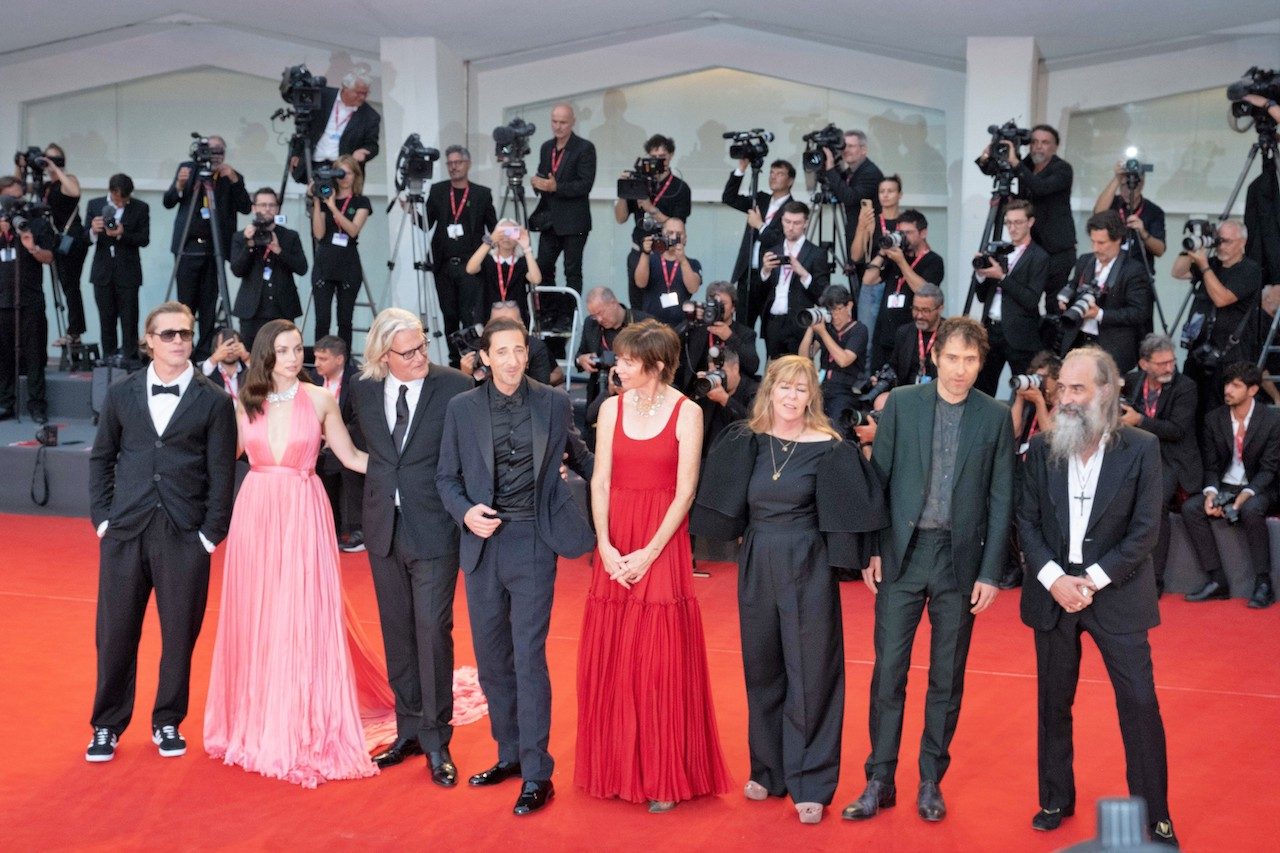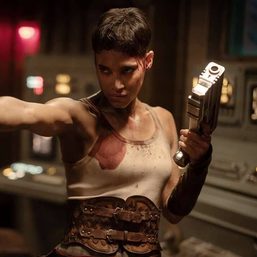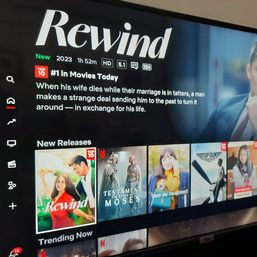SUMMARY
This is AI generated summarization, which may have errors. For context, always refer to the full article.
![[Only IN Hollywood] Ana de Armas’ ‘Blonde’ ambition – and the ghost of Marilyn Monroe](https://www.rappler.com/tachyon/2022/09/netflix-blonde-ana-de-armas.jpg)
LOS ANGELES, USA – First, the good news. Ana de Armas brilliantly embodies the look and essence of Marilyn Monroe in Blonde. She is superb and mesmerizing. It’s one of the year’s best performances.

The bad news is that Blonde, which was one of the most anticipated films in the recent Venice Film Festival, was poorly received by critics. As I write this, the Andrew Dominik-directed biographical drama has a Rotten Tomatoes score of 65%, based on 40 reviews.
Also written by Andrew, based on the novel of the same name by Joyce Carol Oates, Blonde also stars Adrien Brody (Arthur Miller), Bobby Cannavale (Joe DiMaggio), Julianne Nicholson (Glady Pearl Baker, Marilyn’s mother), Caspar Phillipson (John F. Kennedy), Xavier Samuel (Charles Chaplin Jr. – yes, the son of the silent film legend), and Evan Williams (Edward G. Robinson Jr., the son of the esteemed Hollywood actor).
Vulture’s Bilge Ebiri, in his review of the film shot in black and white and Technicolor, echoes many of the critics’ views: “Andrew Dominik’s Blonde is, in effect, a jigsaw puzzle about Norma Jeane Mortenson and Marilyn Monroe that has been left purposefully incomplete, seen in captivating and terrifying fragments. And it’s chopped her to bits, almost literally.”

“From the flashbulbs and klieg lights and cables surrounding Marilyn that open the film to the endless cruelties enacted upon her body and soul, it’s a movie about the creation and fragmentation of identity. And it is brutal, its lush surfaces and old Hollywood recreations almost always giving way to unspeakable horrors.”
“It’s also, to be clear, fiction. Blonde is based on Joyce Carol Oates’s 2000 novel, which takes many, many liberties with the lives of Marilyn and others. The film doesn’t purport to be factual, and besides, it’s such a stylized journey through this character’s life that it’d be hard to come up with any biographical timeline from it. (And if one did, it’d likely be incorrect.)”
“Those looking for a biopic about Marilyn Monroe are sure to be disappointed, confused, and/or outraged, which may explain why Netflix has been so cautious about anybody seeing it up until its premiere at the Venice Film Festival. Regardless, the picture will surely fuel endless rounds of soul-pulverizing debates. In fact, it’s kind of designed to, loaded as it is with provocations.”
A disturbing scene between Ana’s Marilyn and Caspar’s JFK, involving a fellatio close-up, earned Blonde its restrictive NC-17 rating. That’s just one of the “many liberties” that the film and Joyce’s novel take.
In the film’s press conference at La Biennale, attended by Andrew, Ana, Adrien, and Julianne, the writer-director was asked why he pursued Blonde as his passion project despite several setbacks for over a decade. Brad Pitt’s Plan B Entertainment ended up producing the project after its long journey.

“Some things just have an emotional, creative energy to them,” replied Andrew, whose credits include The Assassination of Jesse James by the Coward Robert Ford and Chopper. “Some projects you get involved in and they can hold your attention for about a year or two. But Blonde would never let me go.”
“That’s why I hung onto it for years, because I would just keep having ideas for Blonde. Even when Blonde fell apart, I’d still be thinking about Blonde. But it was the book. It was basically the book.”
On how he cast Ana as the icon who died of a barbiturate overdose at 36, the New Zealand-born filmmaker said, “I saw her in a movie called Knock Knock. And I thought, that girl could be Marilyn Monroe. She looked like her. And she was compelling.”

“When she was on screen, she was all you wanted to watch. And I met her, and we had a conversation. Then she came and read for it. And it was like, take three.”
“I knew it was her. I mean, I actually knew it was her as soon as I saw her on TV. It’s a little bit like love at first sight. When the right person walks through the door, you know it.”
“Sometimes it takes a minute to sort through the difficulties that person might bring with them but you always know.”

For her part, Ana, who was especially memorable in Knives Out, recounted her audition. “The first time I met with Andrew, he asked me how long I needed to prepare for the audition. It’s the scene that I play with Bobby (Cannavale) at the restaurant, the first date. And I told Andrew, about a week or so.”
“I did that on my own, of course. I wasn’t preparing for the accent, the voice. I put on some makeup and we found a horrible blonde wig. But just to have the sense…because my hair is very dark.”

“I wanted to be as close as possible to her as I could, not for Andrew, more for other people who were going to watch that audition. We did that and that went well, apparently.”
“That was not the only audition I had to do. It was a long process of more tests and with wardrobe, different cameras and lenses on the same scene. Then, the voice coach got involved and everything escalated. We just made it better and better until everyone was convinced.”
Andrew added, “The film came alive when we found her. I think once we did the bigger screen test, anyone could see, anyone with eyes could see that it was a good idea.”
A journalist wanted Adrien’s male perspective on why Marilyn continues to be such an iconic figure to this day. The actor answered, “We’ve witnessed a lot of awareness of the struggles that women have faced for a great deal of time. And I’ve always had a soft spot for Marilyn Monroe.”

“Partially because I’m very aware of the great divide between all this public adulation, respect, and acknowledgment that is so far from who she is and that doesn’t reach her and doesn’t quench her burning desire to be creative, to be fulfilled with the work and to be appreciated for a caliber of work that she always strived for.”
“Which is something that on various levels is something that many actors feel. There’s a disconnect. But in her case, she’s one of the most enduring iconic figures. And the fact that she’s so revered and so loved by men and women alike, and yet her inner struggle, sadness, and all the unresolved traumatic moments in her life never left her.”
“It’s almost criminal to me. And so, I have always been drawn to that aspect.”
Ana, whose roots are from Cuba and Spain, was asked to elaborate on her preparation for the biggest role in her career so far. “This was a very immersive, long process of preparation and understanding. I wasn’t very aware of Marilyn.”
“I was familiar with some of her movies and stuff but for me, it was a huge discovery and learning process, starting with the book and of course, the script, and working with Andrew for months, just learning about her, getting to know her.”

“And of course, the majority of the film is about the moments that were not…we don’t know the intimate moments, the very personal ones that were not on camera, when the cameras were not rolling.”
“So of course, despite this being a very specific character and we wanted it to be very detailed and honor her in the recreations and the moments where she was Marilyn, I also had a lot of room to create the real woman underneath that character. Again, I always go back to saying it was about understanding, empathizing, and connecting with her, her pain and trauma.”
“And if you put aside the movie star that she was, she’s just a woman just like me. Same age. Also, an actress in the industry. It was a project that I knew I had to let myself be open to and go to places that I knew were going to be uncomfortable, dark, and vulnerable.”
“But that’s where I found the connection with this person, who she was. But a lot of it was just talking to Andrew through the scenes. I just wanted to find her emotional truth.”
One element brought up by several critics is the repeated showing of a fetus in the film. The Guardian’s Leslie Felperin wrote, “Some viewers might feel that at times the film itself slips into an exploitativeness that is problematic. That also applies to the troubling, easy-to-misinterpret scenes where we see fetuses inside Marilyn’s body that, though never brought to term, talk to her.”
“These sections could easily be seen as anti-abortion propaganda when probably the intention was just the opposite: to show how little control Monroe had over her own body.”
A reporter inquired about these “baby” (fetus) scenes. Andrew’s explanation: “Baby’s in the movie because baby’s in the book. And because baby is real to her. Baby is a real thing. I think for an unwanted person, an unwanted child – having a child, a pregnancy – is a deeply confronting thing.”
“She’s got a great deal of ambivalence about it. On the one hand, she wants to have baby. Because baby can rescue her from her own trauma. That’s her own traumatic childhood.”
“And we know this in the film because she tries to save baby from the very drawer that she was locked in as a baby herself. So, she feels like it’s going to fix some ancient problem.”
“On the other hand, her experience with motherhood is through her own mother. And her mother’s story is that having a child destroyed her life. She was abandoned. She went insane. And she became incredibly violent.”
“So, from an enormous point of view, being pregnant is difficult. She’s damned if she does and she’s damned if she doesn’t. And in many ways in the film, when her life becomes unstable, her childhood reappears. Her original story reappears. And baby’s necessary for that reason.”
Julianne replied to a question on how she fleshed out Marilyn’s mother since very little is known about her.
“For me, it all started in the book, in the script,” said the 2021 Emmy Best Supporting Actress winner for Mare of Easttown. “Much of it is just there. And then talking with Andrew, I knew there’s not much out there about her.”
“But I did know the facts of her mental health, being abandoned and being a single mother at that time. There’s a lot of shame around that as well as her mental state. Hers was not diagnosed because people didn’t care. People didn’t pay attention at that time. People who suffered in this way.”
“Luckily, they do now. And with more films like this, hopefully, it has broadened the conversation actually because it’s very important.”
“Mental health is just as important, if not more so than any physical health that you need to take care of. But it was an act of reading the script, reading the book, and talking with Andrew and using imagination.”
As to what the biggest hurdle was in bringing Blonde to the screen, Andrew quickly answered, “Raising the money.”
Ana chimed in, “I think we all share that one. At least I do because I was involved for a whole year. That’s nothing compared to 11 years for Andrew but that one year was very stressful for me.”
“Andrew told me that at the beginning: ‘You need to be ready to be heartbroken because anything can happen. I’ve been through this for many years, and you never know.’ And it did happen.”
“We got heartbroken a couple of times before we started shooting. But for me, just taking on this character, learning. I just knew right away that I had a lot of work to do which was the exciting part for me, the challenge.”

“And just connecting all of this in my mind, then letting go of it – show up on set, do it, and trust myself and Andrew. Just trying to figure out how I was going to pull this off.”
“Which, you did remarkably,” Adrien said to Ana. “I can’t think of any other person who could have brought what Anna brought to this role. I’ve said this many times. On the first day of filming, I went home with this sense of awe that I had the privilege of actually working with Marilyn Monroe.”
“It’s not that I’m jaded but I’ve been working for many years. I’ve worked my entire lifetime, and it’s very rare that I can say that someone transported me to another time and place. Anna definitely channeled her.”
“I guess the challenge for me is all roles should be challenging. That’s why we do it. This is very complex storytelling. I have a responsibility to honor several aspects. I have to honor a beautiful best-selling novel by Joyce Carol Oates and wonderful source material.”
“I have to honor my filmmaker and his vision in adapting that story and where my character fits in within that storytelling. And I have to honor the character that I am portraying, which in this case, is a fictionalized interpretation of a man who actually had a marriage and an intimate relationship with Marilyn Monroe.”
“I believe there are complexities within that relationship and dynamic that I strived to honor. And it’s a journey but I loved this experience. I loved finding that with Andrew.”
“I just loved all the nuances in every aspect. I’m in awe of this whole experience, the artistry that went into it and all of Anna’s sensitivity, which brought out so much for me and Andrew. And Andrew’s understanding of honoring all of these aspects, giving actors space to find that and creating that safe place.”
Asked whether they felt that the ghost of Marilyn permeated the project, Andrew answered first: “We were chasing her ghost around. We started shooting the movie on August 4, which was the anniversary of her death, and it was not planned. We had a little dust-up in pre-production. We had to push it back a week.”
“And it so happened that the first day of shooting was the day that she died. It was not planned. I only realized it the day before or something like that.”
“When we were shooting that first day, we’ll be shooting in the very apartment that she lived in with her mother. The apartment that you see in the movie that they’re in is the actual house.”
“The room she dies in is the room she actually died in, and her dust is everywhere in Los Angeles. It definitely took on elements of being like a séance.”

Ana said, “I’ll continue with Andrew’s answer about Marilyn’s presence. I feel like so many things happened to all of us, during the shoot. It was interesting.”
“I truly believe that she was very close to us, she was with us. I feel like all of us felt so much respect and responsibility to do good to her and to honor her. Not just the cast and Andrew, of course, but the entire crew.”
“I feel like everyone knew that we were doing something. We were in her service, in a way. We were doing something bigger than us, something more special than just a film about her.”
“She was all I thought about. She was all I dreamed about. She was all I could talk about. She was with me and it was beautiful. I think she was happy.”
“But she would also throw things off the wall sometimes and get mad when she didn’t like something. This is true. These things happened. Being in the same places that she was, filming in her house, it was a very strong sensation.”
“There was something in the air. I think she was approving of what we were doing. Maybe this sounds very mystical or something but it’s true.”
“I think we all felt it. It wasn’t something that I was in character all the time. I wasn’t going home and being in character or even in between takes or my lunch break but I felt that I was living that.”
“I felt that heaviness and that weight on my shoulders. I felt that sadness and that was hard to shake off. I don’t think I wanted to, either.”
“I just let that happen to me, accepted it, and used it. I didn’t want to protect myself from that. It was important to experience all of it.”
In parting, Ana shared, “I did this movie to push myself and because I thought it was a gift to myself. I didn’t do the movie to make other people change their opinion about me, so whatever happens, it’s the experience I take with me. This movie changed my life. It’ll be what it’ll be.” – Rappler.com
Add a comment
How does this make you feel?





There are no comments yet. Add your comment to start the conversation.